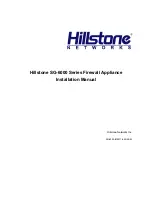
C H A P T E R
25-1
Cisco Catalyst Blade Switch 3120 for HP Software Configuration Guide
OL-12247-01
25
Configuring Port-Based Traffic Control
This chapter describes how to configure the port-based traffic control features on the switch. Unless
otherwise noted, the term switch refers to a standalone switch and to a switch stack.
Note
For complete syntax and usage information for the commands used in this chapter, see the command
reference for this release.
This chapter consists of these sections:
•
Configuring Storm Control, page 25-1
•
Configuring Protected Ports, page 25-5
•
Configuring Port Blocking, page 25-6
•
Configuring Port Security, page 25-7
•
Displaying Port-Based Traffic Control Settings, page 25-18
Configuring Storm Control
These sections contain this conceptual and configuration information:
•
Understanding Storm Control, page 25-1
•
Default Storm Control Configuration, page 25-3
•
Configuring Storm Control and Threshold Levels, page 25-3
Understanding Storm Control
Storm control prevents traffic on a LAN from being disrupted by a broadcast, multicast, or unicast storm
on one of the physical interfaces. A LAN storm occurs when packets flood the LAN, creating excessive
traffic and degrading network performance. Errors in the protocol-stack implementation, mistakes in
network configurations, or users issuing a denial-of-service attack can cause a storm.
Storm control (or traffic suppression) monitors packets passing from an interface to the switching bus
and determines if the packet is unicast, multicast, or broadcast. The switch counts the number of packets
of a specified type received within the 1-second time interval and compares the measurement with a
predefined suppression-level threshold.
















































